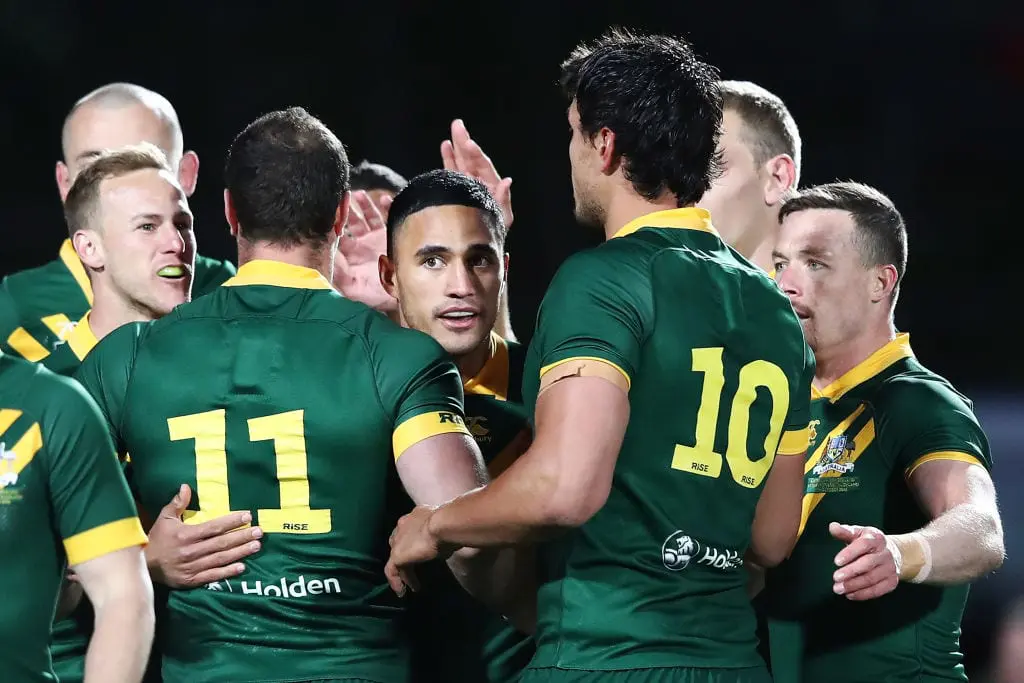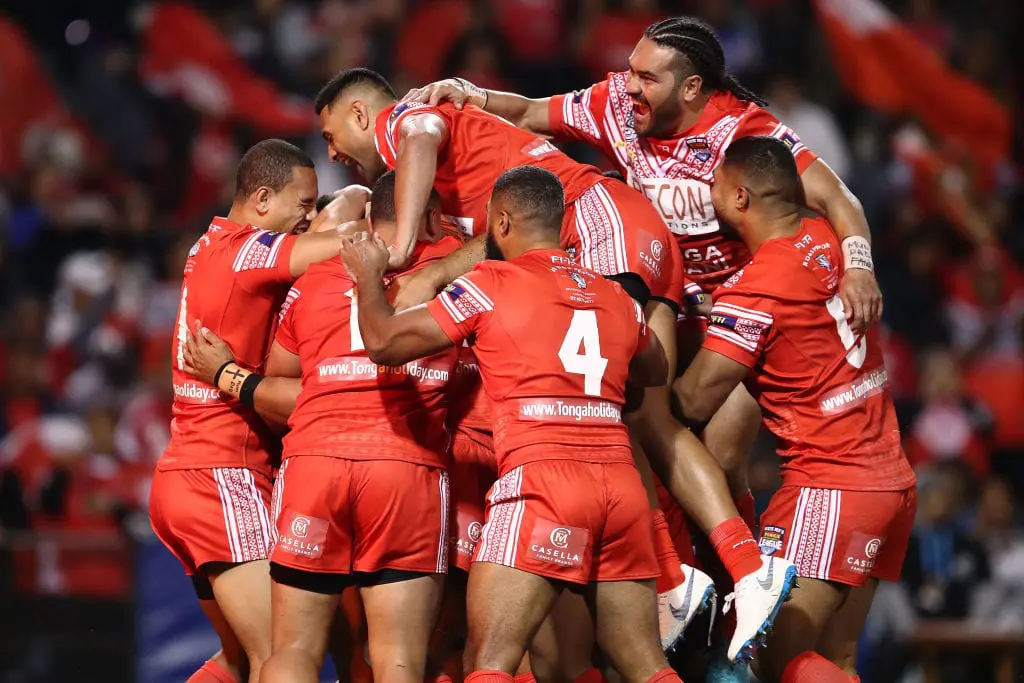In the build-up to the World Cup in England, you will continue to read a lot about how the current international eligibility rules in rugby league need reform.
Much of this commentary will be from people with a vested interest in changing the status quo because the current rules have made their jobs more difficult – such as Australian coach Mal Meninga, who is on record as wanting some sort of change (though he has vacillated on the topic).
Why would Meninga want to change the current rules? Perhaps because they have made picking an Australian side more difficult and (potentially) reduce the Kangaroos' overall chances of winning the tournament.
Given the Kangaroos' position as historically the highest-achieving national side from Australia in any sport, the former is not rocket science. You put together a side from the biggest pool of players in the world, and often the team just about picks itself (particularly when the convention of incumbency is followed as has traditionally occurred in Kangaroo selections).

For lazy journalists, the rules need changing because it has made their job of interpreting the international game more difficult (some won't even bother to do this over the coming months). How hard is it to tip Australia to win an international rugby league tournament when they have an overall win rate of nearly 70 per cent and an even higher win rate of 73 per cent in World Cups?
Like the bookies (who until recently had Samoa at 50-1 to win this year's tournament – now narrowed much more appropriately to 11-1), the bulk of NRL journalists seem to have little idea about international rugby league other than blandly proclaiming “Australia will win”. The task of analysing teams outside their comfort zone of the NRL is made more difficult by the talent being spread around more evenly and not being concentrated exclusively in the Australian team.
One argument goes that because of recent good results by the likes of Tonga, the tier system used in rugby league eligibility is no longer fit for purpose. But for whose purpose? We are about to witness the most competitive World Cup since the expansion of the tournament in 1995; surely an indication that the current eligibility rules are working.
It would seem many of the advocates for change are concerned State of Origin may lose its position as the “pinnacle of the game” if the international game prospers.
Maintenance of Australian hegemony at international level makes it less interesting and therefore more damaging to the game as a whole, but, importantly, it protects Origin. The myopia of this perspective is quite staggering.
But let's take it back a step. What are the current rules and how do they operate? There are basically three ways in which a player can be eligible to play for a nation at international level in rugby league:
1. where the player was born;
2. where the player was resident for a period of five years immediately prior to selection; or
3. where the player has a parent or grandparent whose heritage permits them to play for a country other than where they were born or are resident.
The third rule, the so-called “grandparent rule”, is used extremely widely (and uncontroversially) when considering eligibility in world sport. It is used by other team sports such as ice hockey, rugby union, and soccer as prominent examples (it is also used in basketball in a more limited manner).
The suggestion that it is unique to rugby league is simply incorrect. Indeed, rugby union has recently loosened up its own eligibility rules to more closely mirror those in rugby league (most probably out of concern for the recent growth of rugby league throughout Oceania).
The suggestion that this aspect of eligibility needs reform because rugby league is out of step with other world sports is a complete fallacy. Changing the eligibility rules based on a misconception would hardly be a smart move.
By way of further background, it is important to note that to facilitate the growth of smaller rugby league nations, the International Rugby League (IRL) has utilised a tiered system to ensure a degree of movement could exist between countries for players of dual- or multi-heritage (both an increasingly common phenomenon).
Tier 1 nations are currently defined as Australia, England and New Zealand only. A Tier 2 nation is a full member nation of the IRL except for the three countries mentioned above. A Tier 3 nation is any other nation.

Another argument for change is that because of the occasional upset result by the likes of, for example, Tonga in 2017 and following, Tonga should graduate from a Tier 2 nation to a Tier 1e nation.
Frankly, this is another poorly considered argument. While results are obviously a consideration, they are certainly not the only one in this context. Of greater importance are the resources available to a Tier 1 nation compared to a Tier 2 nation.
The Tier 1 nations have existing rugby league structures (ie. competitions, administrative bodies, clubs etc.) dating back to at least 1908 (England to 1895). Tier 2 nations are treated as such because there is a recognition they have far less resources available to them than do the Tier 1 nations – they simply have less players and less infrastructure.
It is completely disingenuous for the commentariat to compare the resources available to Australia, England and New Zealand, to those available to relatively fledgling nations like Samoa, Tonga, Fiji, Lebanon, Jamaica, Greece, Scotland and Ireland. While countries like France, Italy and Wales have had the benefit of longer periods of engagement in international rugby league, their results suggest they still require special treatment (especially having regard to the extent they were all attacked domestically by rugby union for many years).
Papua New Guinea and the Cook Islands (both countries which have rugby league as their national sport) have socio-economic and population size issues respectively which make their situations also worthy of special consideration.
Graduation between the tiers (particularly from Tier 2 to Tier 1) requires careful consideration of the impact this will have on the country concerned. Long term results and actual growth in national infrastructure are much safer indicators than are outlier or isolated results (particularly during the recent period of sporadic international competition).
It must be remembered at all times that choices around eligibility are very private and personal decisions for players to make, and are often overlaid with cultural sensitivities and are impacted by deep family bonds.
Don't forget players choosing to play for countries of heritage over Australia, England and New Zealand are in fact making an economic decision to accept less money for playing the game at international level – something which confirms the serious nature of the commitment to the heritage nations and makes that commitment far more altruistic than if the reverse was the case. And there is no doubt that a number of the players who have chosen to play for Samoa, Tonga and Fiji, would have been chosen by the Tier One nation they were eligible for but for their brave decisions not to go with the money.

That more and more players are choosing to play for heritage nations over Tier One nations is largely a positive sign for the development of rugby league around the world. It is also a tribute to the bravery of Jason Taumalolo and Andrew Fifita who got this ball rolling with Tonga more than five years ago now.
While it should not be in substitution for the hard graft of development work at ground level in each nation, the use of heritage players provides a very real vehicle for improving the standing and competitiveness of individual nations, particularly at major tournaments like World Cups.
The only real fine-tuning of rugby league's international eligibility rules that needs to take place is to reduce the capacity for switching between countries over too short a period of time. This is more in the nature of a tweak and does not require the “throwing the baby out with the bath water” style favoured by some commentators.
Again restricting the number of players able to play for Tier 2 (and Tier 3) nations would be counter-productive to the presumed common desire to expand rugby league internationally. Premature movement from Tier 2 to Tier 1 is a recipe for disaster for the nation involved and for international rugby league overall. In due course of time, as Tier Two and Tier Three nations acquire consistency in results and are able to build their overall resources, proper consideration can be given to a graduation from one tier to another.
However, the knee-jerk reactions to players choosing heritage over (predominantly) the Kangaroos jumper are just that – and demonstrate a complete lack of understanding of what international rugby league is trying to achieve and will achieve at this year's World Cup.























